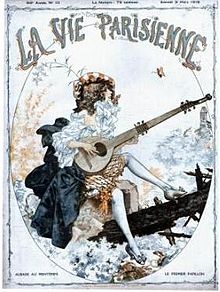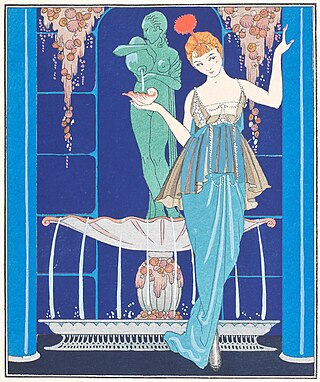
George Barbier, né Georges Augustin Barbier, (1882–1932) was one of the great French illustrators of the early 20th century.
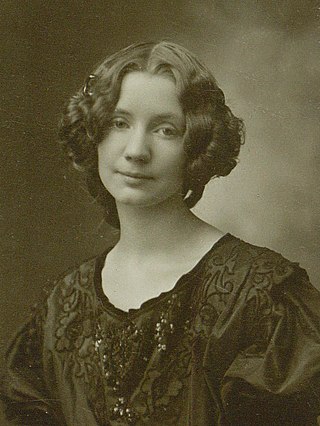
Gerda Marie Fredrikke Wegener was a Danish illustrator and painter. Wegener is known for her fashion illustrations and later her paintings that pushed the boundaries of her time concerning gender and love. These works were classified as lesbian erotica at times and many were inspired by her partner, the transgender woman Lili Elbe. Wegener employed these works in the styles of Art Nouveau and later Art Deco.

Georges Léonnec, the brother of the novelist Félix Léonnec, began his career as a cartoonist selling drawings to newspapers in 1899. After participating in World War I he worked as an illustrator for the magazine La Vie Parisienne. He worked for several other publications including Fantasio and Le Sourire. He was also well known for his advertising illustrations for Byrrh apéritif wine, Dufayel department stores, and the Casino of Paris.

Paul Iribe was a French illustrator and designer in the decorative arts. He worked in Hollywood during the 1920s and was Coco Chanel's lover from 1931 to his death.

The Gazette du Bon Ton was a small but influential fashion magazine published in France from 1912 to 1925. Founded by Lucien Vogel, the short-lived publication reflected the latest developments in fashion, lifestyle and beauty during a period of revolutionary change in art and society. Distributed by Condé Nast, the magazine was issued as the Gazette du Bon Genre in the USA. Both titles roughly translate as "Journal of Good Taste" or "Journal of Good Style."
The Advertising Archives is a picture library and museum with an archive of one million British and American press ads, TV stills, magazine covers, catalogues, greetings cards, posters, illustrations and cultural ephemera dating from 1850 to the present day. It is located in London and is the largest collection of its kind in Europe. The archives are not open to the public.

La vie parisienne is an opéra bouffe, or operetta, composed by Jacques Offenbach, with a libretto by Henri Meilhac and Ludovic Halévy.
André Édouard Marty or A. É. Marty was a Parisian artist who worked mainly in the classic Art Deco style.

L'Illustration was a weekly French newspaper published in Paris from 1843 to 1944. It was founded by Édouard Charton with the first issue published on 4 March 1843, it became the first illustrated newspaper in France then, after 1906, the first international illustrated magazine; distributed in 150 countries.

Chéri Hérouard (1881–1961) was a French illustrator who was most famously known for his forty-five-year work for French society magazine, La Vie Parisienne. Born as Chéri-Louis-Marie-Aime Haumé in Rocroi on 6 January 1881, Hérouard's father died in a hunting accident just before his birth. His mother remarried to a Hérouard, who was a descendant of the doctor of Louis XIII, and Chéri took the new name. Hérouard married Henriette Tabillon on 17 August 1903. Chéri Herouard's first printed artwork appeared in Le Journal de la Jeunesse in 1902. Upon stepping into the Publishing House of Calmann-Lévy, he met Anatole France, who encouraged him to continue his work.
Count Renato Zavagli Ricciardelli della Caminate, professionally known as René Gruau was a fashion illustrator whose exaggerated portrayal of fashion design through painting has had a lasting effect on the fashion industry. Because of Gruau's inherent skills and creativity, he contributed to a change in the entire fashion industry through the new pictures that represented the already popular designs created by designers in the industry. The benefits, including economic stimulation and enhancement of advertising are still present in the industry today via a new way of fashion illustration, fashion photography. Gruau became one of the best known and favorite artists of the haute couture world during the 1940s and 50s working with Femina, Marie Claire, L'Officiel, L'Album Du Figaro and an assortment of "high-style" magazines. Gruau's artwork is recognized and commended internationally in some of Paris and Italy's most prestigious art museums including the Louvre in Paris and the Blank in Italy. In addition to his international fame and recognition, "Gruau's artwork is known for its timeless and enduring style".
Maurice Milliere (1871–1946) was a French painter, printmaker and illustrator, born in Le Havre to upper working-class parents; his father was a merchant's clerk. His early artistic interests are not known, but he completed his secondary education at the Ecole De Beaux Arts in Le Havre before travelling to Paris in 1889 to continue his studies at the l'Ecole des Arts Decoratifs and l'Ecole des Beaux-Arts.
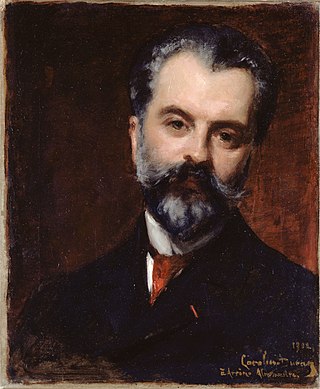
Arsène Alexandre was a French art critic.

René Vincent (1879–1936) was a French illustrator who was active in the 1920s-1930s. He worked in an Art Deco style and became famous for his poster designs. He was influential in the Art Deco movement in the period between the two world wars. His illustrations helped define advertising in the 20th century.

Bernard Boutet de Monvel was a French painter, sculptor, engraver, fashion illustrator and interior decorator. Although first known for his etchings, he earned notability for his paintings, especially his geometric paintings from the 1900s and his Moroccan paintings made during World War I. In both Europe and the United States, where he often traveled, he also became known as a portrait painter for high society clients.

Roger Boutet de Monvel was a French writer of historical studies and magazine articles on fashion and other topics.
Charles Émile Egli was a Swiss-born illustrator and painter who spent most of his life in Paris.
Charles Derennes was a French novelist, essayist and poet, the winner of the Prix Femina in 1924.
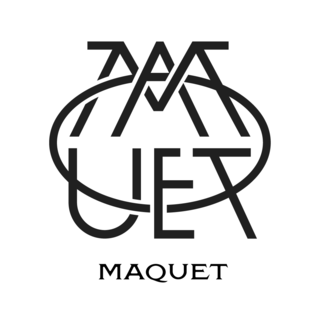
Maquet is a French manufacturer of luxury stationery, leather goods, and art prints, established in Paris in 1841 by the Maquet brothers, Hector and Charles. One of the most renowned Parisian luxury houses, Maison Maquet became official purveyor to Empress Eugénie as well as to several royal courts, winning multiple awards and medals at various World's fairs over the course of its history.

Pierre Antoine Baptiste René Lafitte was a French journalist, publisher and editor born 3 May 1872 in Bordeaux and died 13 December 1938 in Paris. He innovated in illustrated press and popular novel formats in France.
